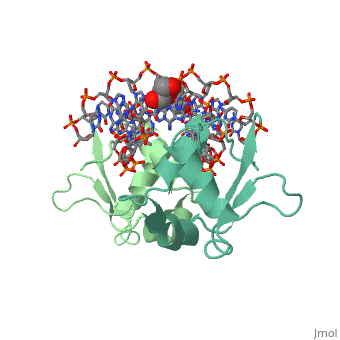Timothy Locksmith sandbox Heat Sock Factor
From Proteopedia
(Difference between revisions)
| Line 4: | Line 4: | ||
== Introduction == | == Introduction == | ||
| - | Heat Shock Factor (HSF) is primarily used for the transcription of Heat shock proteins, which are used for the survival of a cell under high temperature stress situations. | + | Heat Shock Factor (HSF) is primarily used for the transcription of Heat shock proteins, which are used for the survival of a cell under high temperature stress situations. Its structure is highly conserved through species from flies to humans, and even all the way to yeast, which suggests that its existence is very important for the survival of organisms. Studies delving into the uses of HSF have proven promising in Cancer research fields. In some instances when cancer cells had their HSF inhibited underwent cell death instead of proliferation, thus ceasing the spread of the cancer and reducing its size. It is hypothesized that HSF is an integral part of cancer cell survival. |
== Regulation == | == Regulation == | ||
Revision as of 01:19, 28 October 2015
| |||||||||||
References
- ↑ Hanson, R. M., Prilusky, J., Renjian, Z., Nakane, T. and Sussman, J. L. (2013), JSmol and the Next-Generation Web-Based Representation of 3D Molecular Structure as Applied to Proteopedia. Isr. J. Chem., 53:207-216. doi:http://dx.doi.org/10.1002/ijch.201300024
- ↑ Littlefield O, Nelson HC. A new use for the 'wing' of the 'winged' helix-turn-helix motif in the HSF-DNA cocrystal. Nat Struct Biol. 1999 May;6(5):464-70. PMID:10331875 doi:10.1038/8269
- ↑ doi: https://dx.doi.org/10.1126/science.8421783

